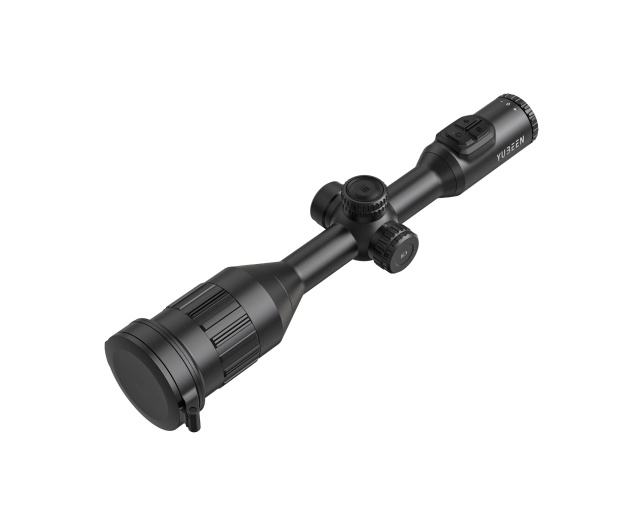How Do Thermal Imaging Scopes and Regular Cameras Work?
Thermal imaging scopes, exemplified by Yubeen’s cutting-edge solutions, detect infrared radiation emitted as heat, enabling clear visualization in total darkness, fog, or smoke. In contrast, regular cameras capture visible light reflected from objects, delivering high-quality images in adequately lit environments. These fundamental differences in operational principles underpin their unique strengths and applications. This article examines the mechanics of both systems, their image-capture methodologies, and the scenarios where they excel. It also explores the professional value of Yubeen’s thermal imaging scopes, highlighting their precision and versatility for industrial, security, and outdoor pursuits. Understanding these distinctions empowers users to select the optimal tool for their objectives.

How Do Thermal Imaging Scopes Operate?
Thermal imaging scopes are like superheroes with heat-vision powers. They spot infrared radiation, which is just heat pouring out from objects. Regular cameras lean on visible light, but these champs don’t need that. Instead, they use nifty uncooled sensors to catch heat and paint it into a thermal picture. Take the ET35 thermal imaging module from Yubeen, for example. It boasts a sharp 384 × 288 resolution sensor and a super-sensitive <18mK NETD. This lets it notice tiny heat changes in all kinds of places. Plus, they come with cool tricks! Picture-in-Picture (PIP) zooms in for a closer peek. Digital Detail Enhancement (DPC) sharpens the view. And automatic hotspot tracking helps you lock onto targets fast. Yubeen’s thermal imaging scopes are ready to roll in any adventure!
This heat-sniffing magic sets thermal imaging scopes apart. Now, let’s flip the switch and see what makes regular cameras tick.
What Drives the Functionality of Regular Cameras?
Regular cameras are like artists capturing light’s gentle brushstrokes. They grab visible light bouncing off things around us. Lenses focus this glow onto an image sensor. Then, the sensor turns it into electric signals to craft a picture. How clear it looks depends on a few pals: the brightness of the scene, the lens’s quality, and the sensor’s sharpness. Unlike Yubeen’s thermal imaging scopes, these cameras can’t spot heat or shine in total darkness. They need a light buddy to glow, or the image gets fuzzy.
Both devices snap pictures in their own special ways. Let’s dig into how they differ in their craft.
How Do These Devices Capture Images Differently?
The Role of Heat Detection in Thermal Imaging
Thermal imaging scopes are heat detectives! They spot warmth instead of light. This superpower lets them see in pitch-black nights or through smoky fog. The ET50 thermal imaging module from Yubeen is a star here. It spies heat trails up to 2,600 meters away with its 50mm F1.0 lens and 4.33x zoom. It picks up even the tiniest heat whispers. That’s why thermal imaging scopes are heroes for jobs like watching over places or tricky missions.
Light Sensitivity as the Foundation for Regular Cameras
Regular cameras, on the other hand, thrive on light’s gentle touch. They catch visible rays to build their images. If the light dims, their pictures get grainy or blurry. Thermal imaging scopes from Yubeen use a heat range of 8–14μm to see. But regular cameras stick to the visible rainbow. They can’t peek at heat like their thermal pals do.
Seeing these differences opens up where thermal imaging scopes really light up the night. Let’s check out their best stages!
In What Situations Does a Thermal Imaging Scope Excel?
Applications in Low Visibility Conditions
Thermal imaging scopes shine like stars in murky settings. Foggy days or dark nights? No problem! Yubeen’s DT50L thermal imaging system is a champ here. It offers fun modes like Black Hot, White Hot, Red Hot, and Fusion. Its clear, sharp sensors give bright pictures even in tough spots. This makes thermal imaging scopes perfect for search-and-rescue quests or sneaky military moves.
Benefits for Nighttime Use and Surveillance
At night, thermal imaging scopes are your trusty sidekicks. They don’t need extra light to work their magic. Yubeen’s FX50L, for instance, has recoil-activated recording and bullet-path math. These perks make it a go-to for watchful tasks where every detail counts. Thermal imaging scopes from Yubeen bring peace of mind in the dark!
But what about regular cameras? They have their own hurdles in special scenes. Let’s peek at those next.

Are There Any Limitations to Using a Regular Camera in Specialized Scenarios?
Challenges in Poor Lighting Environments
Regular cameras stumble when the lights go low. They lean hard on bright rays to snap clear shots. Without enough glow, pictures turn fuzzy or lose their sparkle. This makes them tricky for places where lights can’t shine or quiet moves are key.
Inability to Detect Temperature Variations
Regular cameras miss the heat party, too. They can’t spot warmth differences like Yubeen’s thermal imaging scopes do. This gap makes them weak for jobs needing heat checks or seeing through smoke or bushes. Regular cameras just can’t keep up there.
Knowing these quirks helps pros pick the right tool. Now, let’s see why thermal imaging scopes are a pro’s best friend!
Why Should You Consider a Thermal Imaging Scope for Professional Use?
Enhanced Precision for Industrial and Security Applications
Thermal imaging scopes are like eagle-eyed helpers for work and safety. They catch heat waves from objects, spotting tiny warmth shifts we can’t see. Yubeen’s ET35 thermal imaging module is a gem. It has a 384 × 288 resolution sensor and a keen <18mK NETD. This catches even small heat changes anywhere. It’s great for checking machines for hot spots or guarding against sneaky visitors.
Yubeen’s DT50 thermal imaging system stretches its eagle eyes to 2,600 meters. It tracks hot spots on its own and offers modes like Black Hot and Fusion. Its tough IP67-rated shell stands strong from -30°C to 55°C. These make thermal imaging scopes a must for sharp, safe work.
Practical Advantages in Hunting and Wildlife Observation
For hunters and nature fans, thermal imaging scopes are a game-changer. They glow in dim light where regular sights trip up. Yubeen’s ST35L, with its 1,800-meter reach and fun viewing modes, tracks critters through thick leaves or at night. It’s a trusty pal for the wild!
FAQ:
- How long do batteries last in Yubeen’s thermal imaging scopes?
Battery life shines bright with Yubeen’s thermal imaging scopes! It varies by model and use. For example, the DT50L keeps going for hours on a single charge. Heavy use, like constant hotspot tracking, may drain it faster. Most Yubeen models offer rechargeable packs. Check your scope’s guide for exact run times!
- Can Yubeen’s thermal imaging scopes record what I see?
Yes, they sure can! Many Yubeen thermal imaging scopes, like the FX50L, have cool recoil-activated recording. It snaps video or pics when you shoot. This handy trick saves your night hunts or watch moments. Just pop in a memory card, and you’re ready to capture!
- How far can Yubeen’s thermal imaging scopes detect heat?
Detection range varies by model. Yubeen’s ET50 thermal imaging module reaches up to 2,600 meters with its 50mm F1.0 lens. The DT50 offers similar long-range capability. This makes them valuable for security and wildlife observation.

